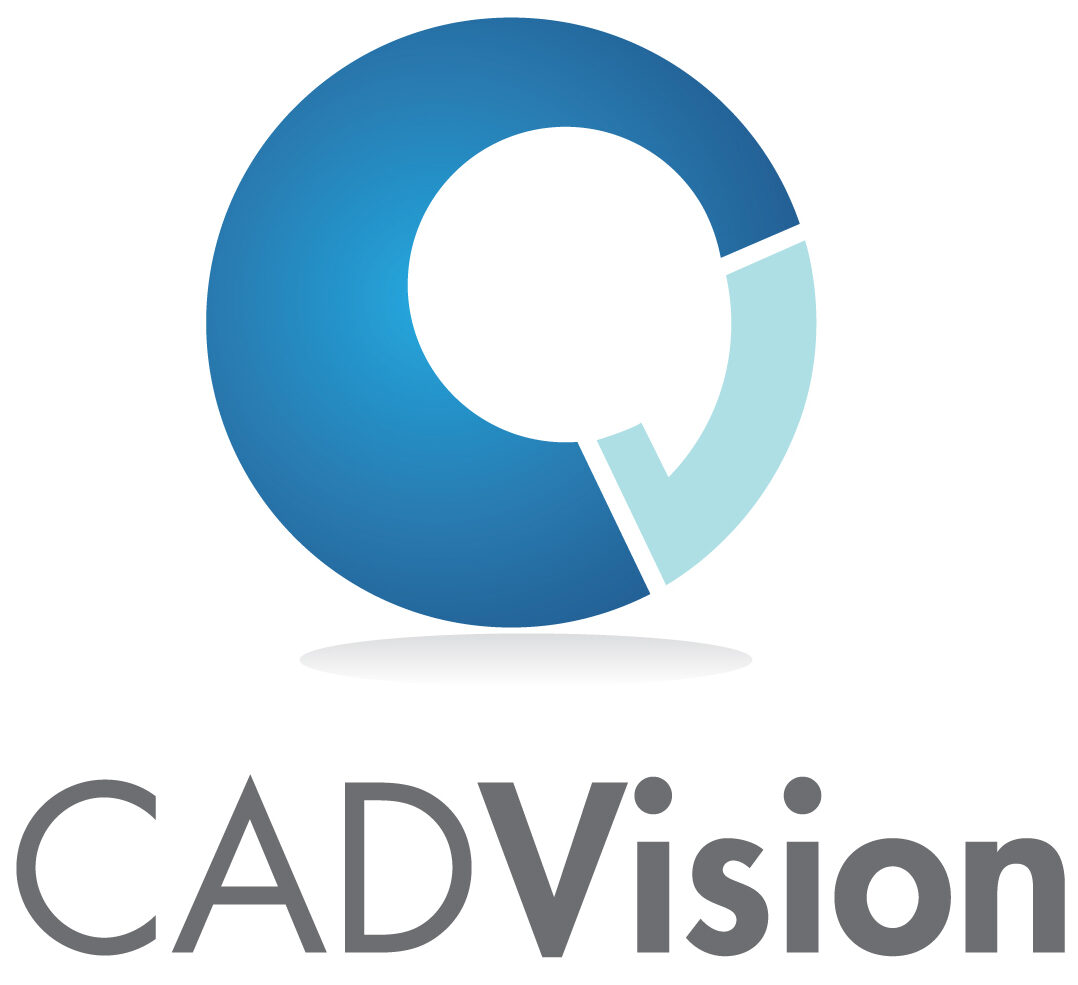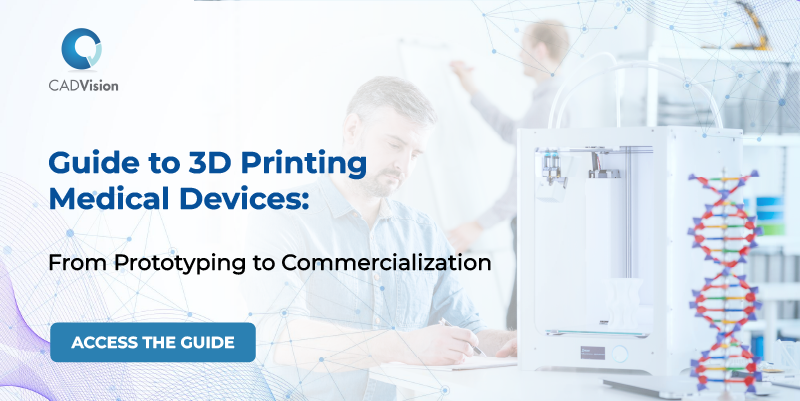With improvements in the healthcare system, there is a surge in demand for medical devices, with the market expected to reach 657.98 billion USD by 2028. However, coping with the pace and keeping a steady supply can pose a significant challenge for manufacturers.
3D printing plays a vital role in medical device manufacturing — the short market time and affordability of 3D printers have enabled manufacturers to use the technology to meet surging demands globally.
Medical 3D printing incorporates computer-aided design (CAD) and 3D printing technologies to produce medical devices, anatomical models, implants, etc., with the utmost precision.
This 3D printing medical devices guide discusses the applications of 3D printing techniques for producing medical devices. It will also take you through some 3D printing applications for medical devices that are revolutionizing the healthcare system. Dive in to learn more.
Why is 3D Printing Used in Making Medical Devices?
Owing to the flexibility of use, customizability, speed, and affordability, 3D printing techniques are widely used in the manufacturing of medical devices.
Let us look at the versatility of this technique with some real-world instances of 3D printing in medical device manufacturing.
Rapid Prototyping of Medical Devices
Advanced patient care and advancements in the healthcare industry require developing new products. Prototyping is an element that helps design devices, incorporate changes as and when needed, and test them in a controlled environment.
Rapid prototyping uses three-dimensional CAD data to fabricate full-scale models of a physical part. 3D printing works exceptionally well for prototyping as it provides freedom, eliminates the hassle of tooling, and produces parts having mechanical properties almost similar to those produced using conventional methods.
Manufacturers using 3D printing have the flexibility to manufacture products that appear, feel, and work like prototypes of the most complex medical devices. Even new changes can be incorporated within hours and validated to determine if further changes need to be applied. Such prototypes can also be presented to investors or potential customers.
Companies like Ekso Bionics have used the versatility of 3D printing to create customized exoskeletons that help paraplegic individuals gain mobility.
Patient-Specific Commercial Medical Device Manufacturing
Personalized medical equipment can help improve the outcome of the treatment of patients.
Manufacturing medical devices using traditional processes is an expensive and time-consuming process. They cannot be used to produce patient-specific or personalized products designed to suit the individual requirements of a patient in particular.
On the contrary, 3D printing allows greater personalization of devices, which helps ensure they can be tailored per the patient’s physiology and requirements.
This is done in the following two ways:
- Rapid tooling: 3D printing finds use in custom rapid tooling manufacturing like 3D printed molds, casts, patterns, and dies. These are integral to several conventional manufacturing techniques like injection molding, silicone molding, thermoforming, insert molding, and metal casting.
- Direct 3D printing customized medical devices: The 3D printing technique is also used for manufacturing final, ready-to-use medical devices for patients. Since 3D printing does not require tooling, it streamlines and makes the production of complex designs and parts cost-efficient.
A primary use case of 3D printing in manufacturing personalized medical devices is orthopedic implants. These can adapt to an individual’s bone contour or prosthetic leg sockets whose stiffness can be adjusted to an individual’s BMI or lifestyle.
Conformis, a company specializing in patient-specific orthopedic implants, has leveraged 3D printing to create customized knee and hip implants. This approach leads to better fit, improved joint function, and faster recovery for patients undergoing joint replacement surgeries.
Alongside surgical tools, 3D printing is also popularly used for producing either components of medical devices or whole medical devices, especially for those with complex designs that would be difficult to produce using traditional techniques.
Due to their efficiency and cost-effectiveness, 3D printing techniques are widely used to produce emergency medical supplies, which can help fill the supply chain gap.
Some Applications of 3D Printing in Medical Device Manufacturing
Medical 3D printing has helped revolutionize the healthcare industry by providing solutions to medical professionals and manufacturers. From orthopedic surgery to veterinary service, 3D printing has many uses. Some uses of this technique are listed here:
- Prostheses and orthoses: 3D printing has made it easier to build prostheses and orthoses that fit better and are much more comfortable than those made using conventional methods.
3D printing enables customization in the design of prosthesis sockets using additive manufacturing and 3D scanning techniques. This makes it easy for children or teenagers to replace their sockets later in life.
Certain parts of prostheses can be made flexible or stiff, depending on what is comfortable for the user. In the case of orthoses, the designs can be customized to improve hygiene and breathability.
- Plastic and reconstructive surgery: Several 3D-printed medical devices can be used in plastic and reconstructive surgery. This treatment is performed on patients who suffer from traumas or deformities.
The primary reason why 3D printing is popularly used in plastic and reconstructive surgery is because such needs are mostly patient-specific. This ensures a better fit and eliminates the risk of postoperative infection.
- Orthopedic surgery: When discussing 3D printing medical devices, it is almost impossible to overlook their widespread applications in orthopedic surgery. Personalized implants can provide better alignment and coverage and match the properties of the patient’s bone.
Popular 3D Printers in Use
3D printing medical device companies need to choose the proper technique for 3D printing that will deliver the most favorable outcome for a given case. Listed below are the different 3D printers that are used for manufacturing different medical devices:
Stereolithography
Stereolithography or SLA 3D printers harness the use of a laser and cure liquid resin into a hardened form of plastic using a process known as photopolymerization. The precision of this technique makes it a standard choice among healthcare professionals and manufacturers.
Pros:
- The technology can produce high-resolution and precise medical devices.
- Devices thus produced have a smooth surface finish.
- SLA resin formulations have several optical, thermal, and mechanical properties that are suited to match various industrial and engineering standards.
- Offers a vast selection of biocompatible materials for medical and dental applications.
Cons:
- Prices are slightly on the higher side.
- SLA resin parts require post-printing processing.
Fused Deposition Modeling
Fused deposition modeling, or fused filament fabrication, is a technique that builds medical devices by depositing thermoplastic filament layer by layer. It is suitable for use by both professionals and hobbyists.
Pros:
- It can be used with various standard thermoplastics like PLA, ABS, etc., making it a cost-effective option.
- Some FDM materials are biocompatible.
- Suitable for making simple parts using low-cost prototyping.
Cons:
- Low resolution and accuracy make this technique unsuitable for making devices with intricate designs.
- Slow manufacturing process.
Selective Laser Sintering
Selective Laser Sintering or SLS 3D printers incorporate high-power lasers to join polymer powder particles. The powder that remains unfused supports the part at the time of printing, eliminating the need for any support structure.
Pros:
- This technique can be used for making complex devices.
- SLS uses nylon, which has sturdy mechanical properties. Nylon is light, flexible, strong, and resistant to heat, UV light, dirt, water, or chemicals. Therefore, medical devices produced are safe to be used.
Cons:
- The choice of material is limited.
- Products have a rough finish initially; they require media blasting for a smoother finish.
Direct Metal Laser Sintering and Selective Laser Melting
These printers can make accurate designs and functions similar to SLS printers. In this technique, the metal powder particles are fused layer by layer with the help of a laser instead of polymers.
Pros:
- These printers can be used for making high-performing end-use metal medical devices.
- The finished products are biocompatible, strong, and durable.
- The technique is capable of replicating complex designs.
Cons:
- The workflow is complex.
There is no one-size-fits-all when choosing the most appropriate 3D printer to manufacture the best-quality medical devices. Based on the requirements, manufacturers must choose the printer that will deliver desirable outcomes.
Conclusion
The use of 3D printing technology does not only help slash down cost but also reduces the time a product takes to reach the market. With the help of this technology, manufacturers can create personalized medical devices that cannot be produced through traditional tools.
Due to its versatility and cost-effectiveness, 3D printing has gained tremendous popularity in medicine. From 3D-printed medical implants to prosthetics, the technology has revolutionized the healthcare sector by shortening product development cycles and developing better and innovative solutions.
If you want to reduce production costs, expedite production, and shorten market time, CADVision can be your partner in shifting from conventional manufacturing to 3D printing. With CADVision, you can embrace new technology and improve patients’ lives while adhering to regulatory guidelines and quality management systems.





